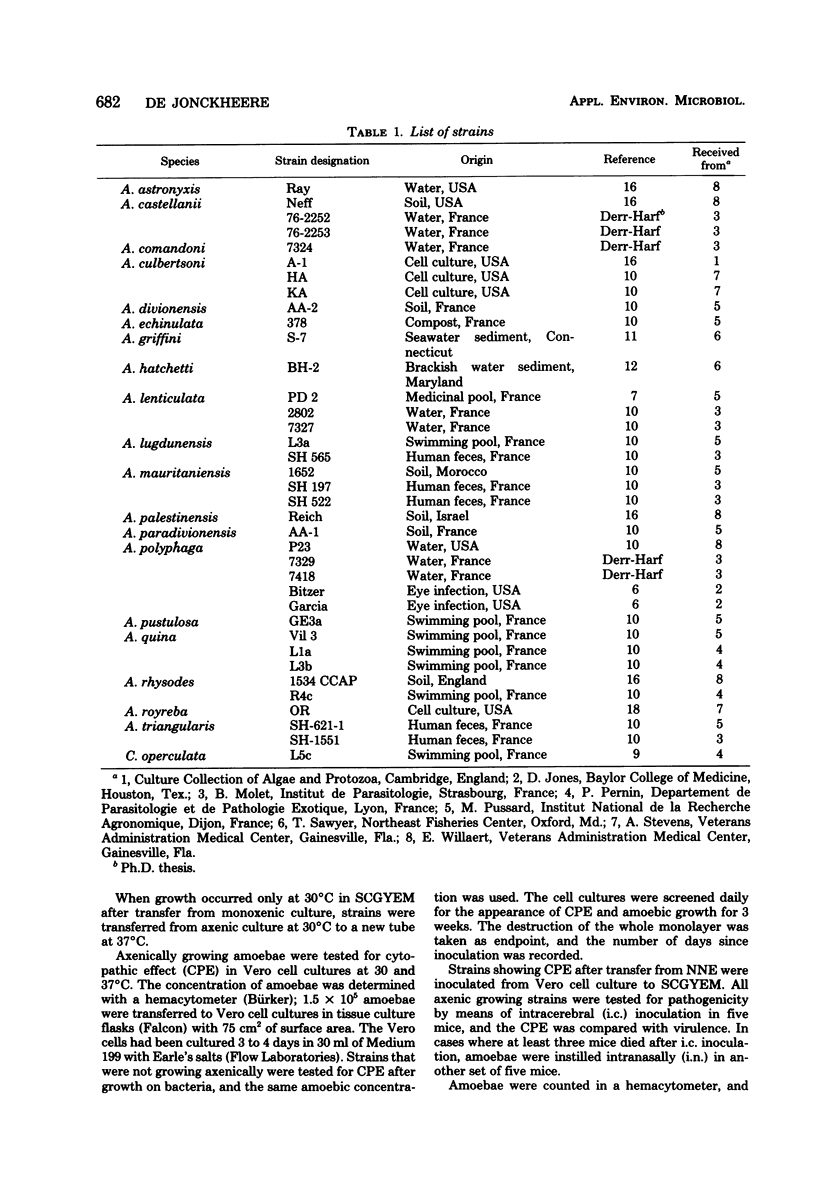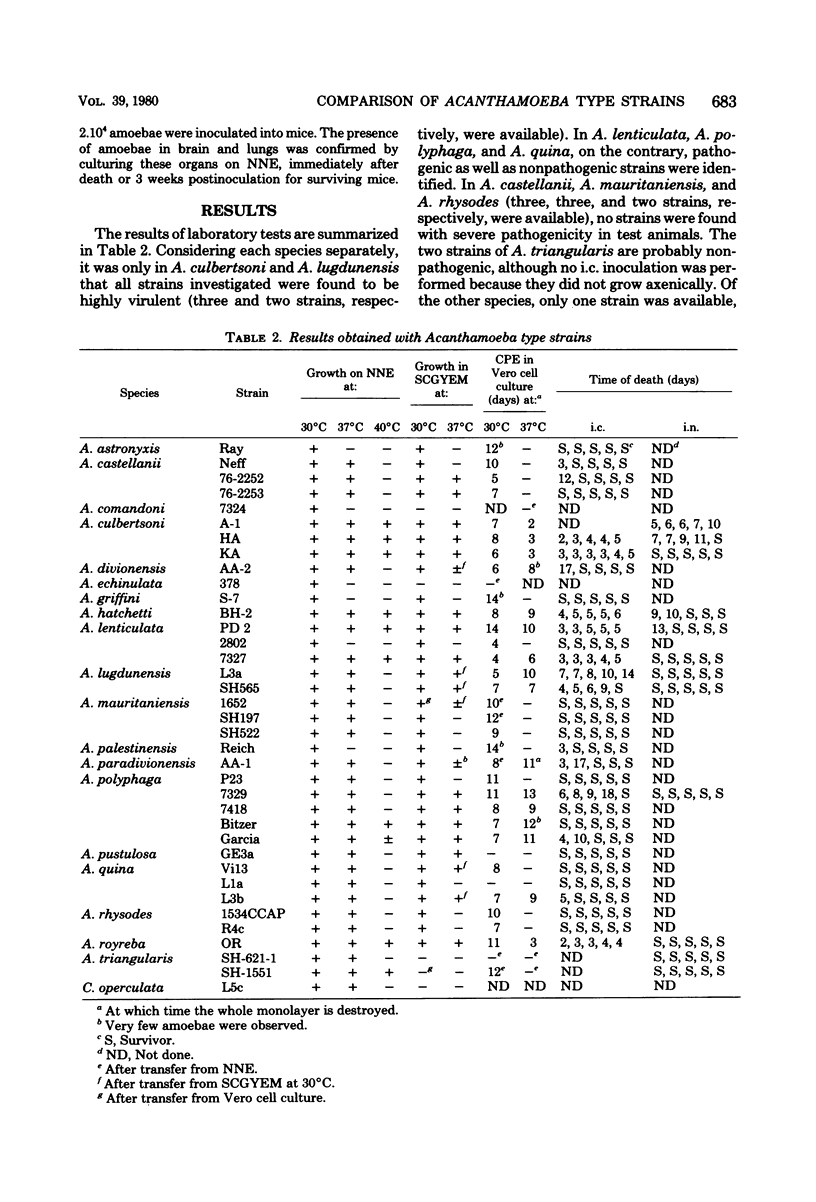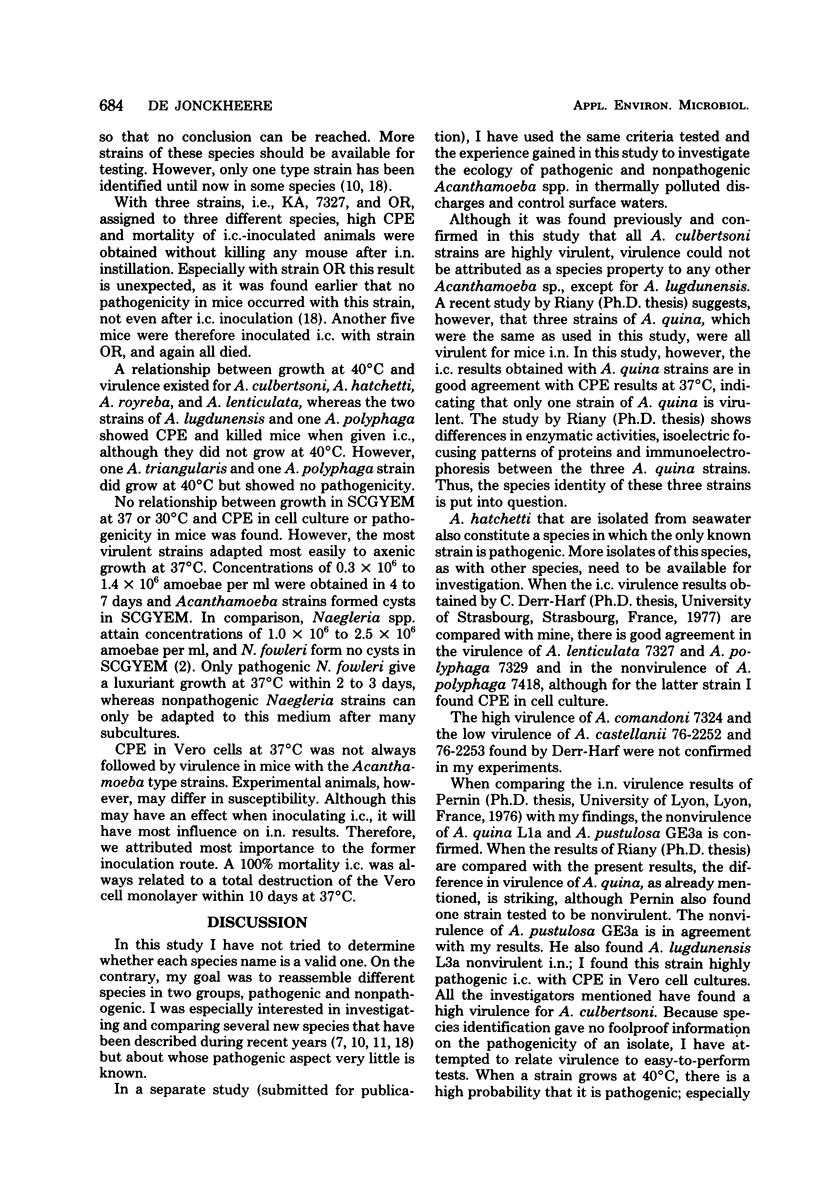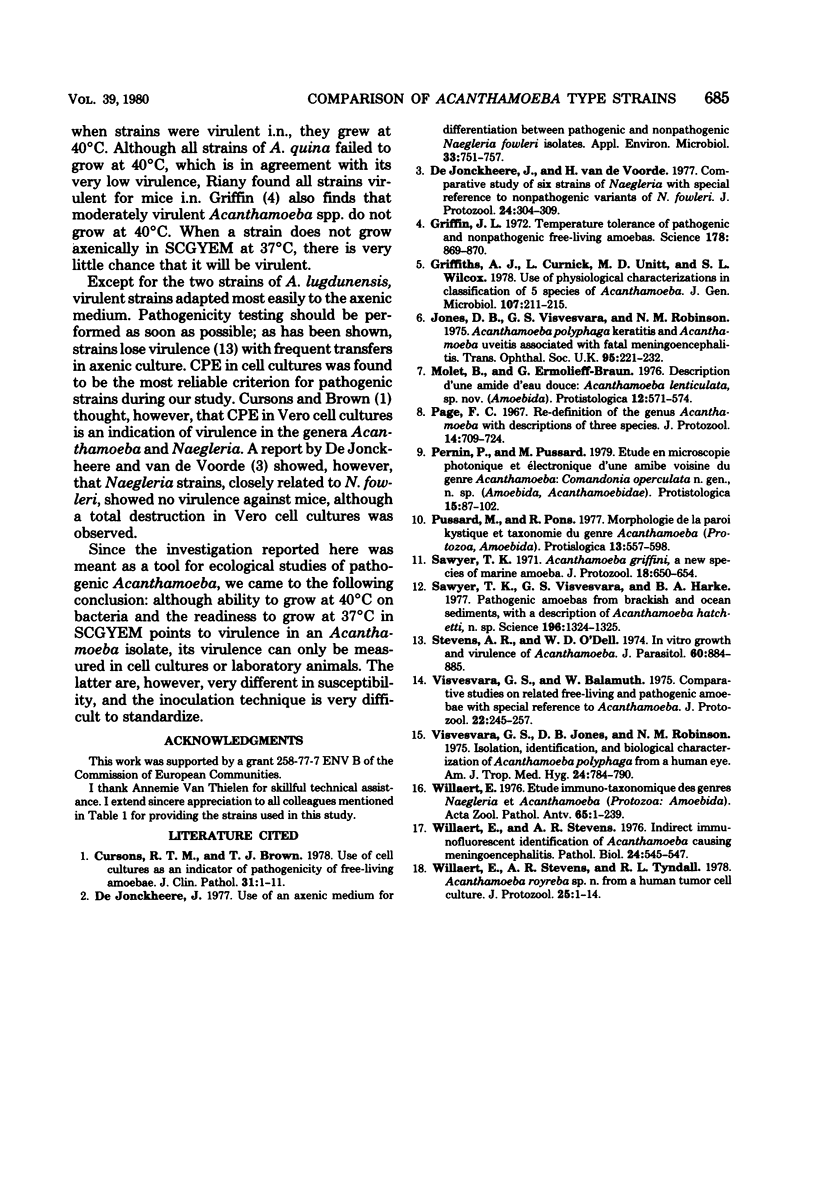Abstract
A total of 36 strains belonging to 19 different species of Acanthamoeba were compared for temperature tolerance, ability to grow in an axenic medium, cytopathic effect in Vero cell culture, and virulence in mice. Pathogenic strains appeared to belong to different species, whereas pathogenic and nonpathogenic strains occurred in one species. Although growth at high temperatures and readiness to grow axenically indicated a potential for pathogenicity, each such strain had to be tested in cell cultures or laboratory mice to determine whether or not it was virulent. This study was not intended to differentiate Acanthamoeba spp., but to provide methods to be used for the specific isolation and identification of pathogenic Acanthamoeba strains.
Full text
PDF




Selected References
These references are in PubMed. This may not be the complete list of references from this article.
- Cursons R. T., Brown T. J. Use of cell cultures as an indicator of pathogenicity of free-living amoebae. J Clin Pathol. 1978 Jan;31(1):1–11. doi: 10.1136/jcp.31.1.1. [DOI] [PMC free article] [PubMed] [Google Scholar]
- De Jonckheere J. Use of an axenic medium for differentiation between pathogenic and nonpathogenic Naegleria fowleri isolates. Appl Environ Microbiol. 1977 Apr;33(4):751–757. doi: 10.1128/aem.33.4.751-757.1977. [DOI] [PMC free article] [PubMed] [Google Scholar]
- De Jonckheere J., van de Voorde H. Comparative study of six strains of Naegleria with special reference to nonpathogenic variants of Naegleria fowleri. J Protozool. 1977 May;24(2):304–309. doi: 10.1111/j.1550-7408.1977.tb00983.x. [DOI] [PubMed] [Google Scholar]
- Griffin J. L. Temperature tolerance of pathogenic and nonpathogenic free-living amoebas. Science. 1972 Nov 24;178(4063):869–870. doi: 10.1126/science.178.4063.869. [DOI] [PubMed] [Google Scholar]
- Jones D. B., Visvesvara G. S., Robinson N. M. Acanthamoeba polyphaga keratitis and Acenthamoeba uveitis associated with fatal meningoencephalitis. Trans Ophthalmol Soc U K. 1975 Jul;95(2):221–232. [PubMed] [Google Scholar]
- Page F. C. Re-definition of the genus Acanthamoeba with descriptions of three species. J Protozool. 1967 Nov;14(4):709–724. doi: 10.1111/j.1550-7408.1967.tb02066.x. [DOI] [PubMed] [Google Scholar]
- Sawyer T. K., Visvesvara G. S., Harke B. A. Pathogenic amoebas from brackish and ocean sediments, with a description of Acanthamoeba hatchetti, n. sp. Science. 1977 Jun 17;196(4296):1324–1325. doi: 10.1126/science.867031. [DOI] [PubMed] [Google Scholar]
- Stevens A. R., O'Dell W. D. In vitro growth and virulence of Acanthamoeba. J Parasitol. 1974 Oct;60(5):884–885. [PubMed] [Google Scholar]
- Visvesvara G. S., Balamuth W. Comparative studies on related free-living and pathogenic amebae with special reference to Acanthamoeba. J Protozool. 1975 May;22(2):245–256. doi: 10.1111/j.1550-7408.1975.tb05860.x. [DOI] [PubMed] [Google Scholar]
- Visvesvara G. S., Jones D. B., Robinson N. M. Isolation, identification, and biological characterization of Acanthamoeba polyphaga from a human eye. Am J Trop Med Hyg. 1975 Sep;24(5):784–790. doi: 10.4269/ajtmh.1975.24.784. [DOI] [PubMed] [Google Scholar]
- Willaert E. Etude emmuno-taxonomique des genres Naegleria et Acanthamoeba (Protozoa: Amoebida) Acta Zool Pathol Antverp. 1976 Dec;(65):1–239. [PubMed] [Google Scholar]
- Willaert E., Stevens A. R., Tyndall R. L. Acanthamoeba royreba sp. n. from a human tumor cell culture. J Protozool. 1978 Feb;25(1):1–14. doi: 10.1111/j.1550-7408.1978.tb03854.x. [DOI] [PubMed] [Google Scholar]


